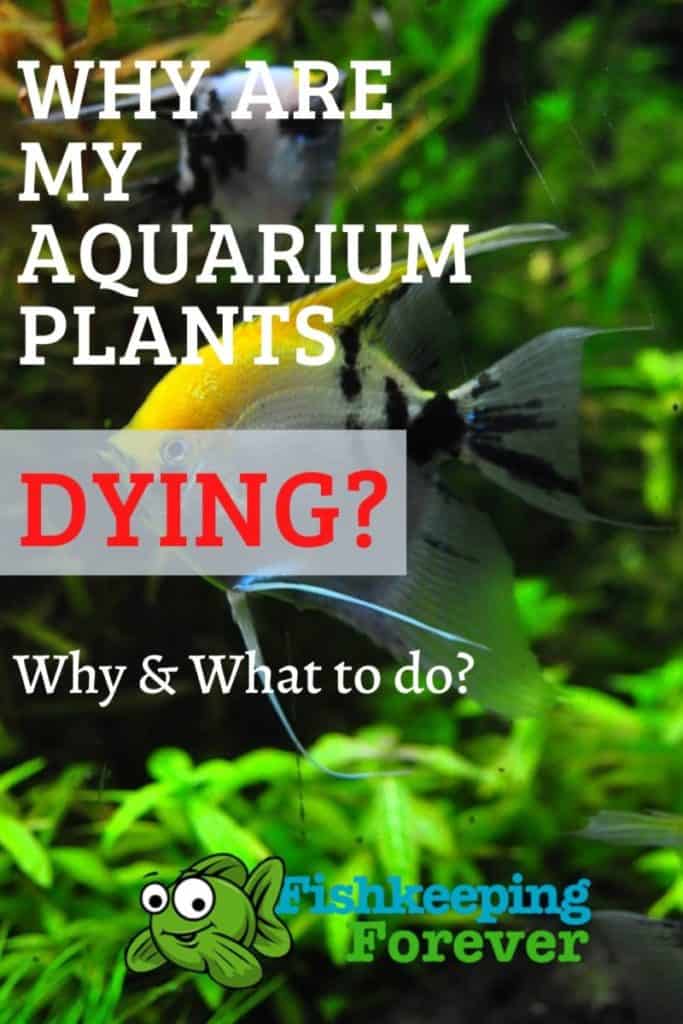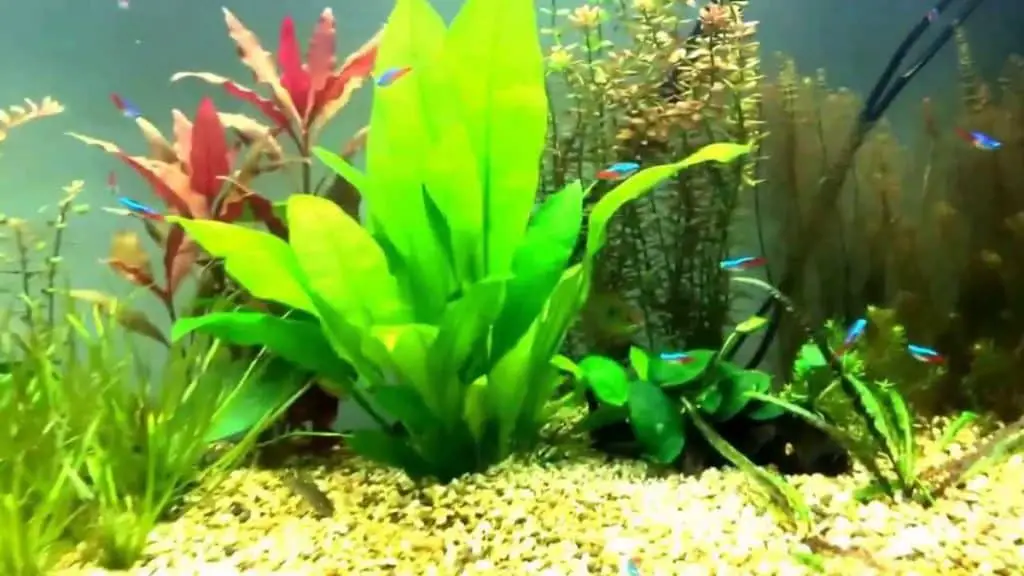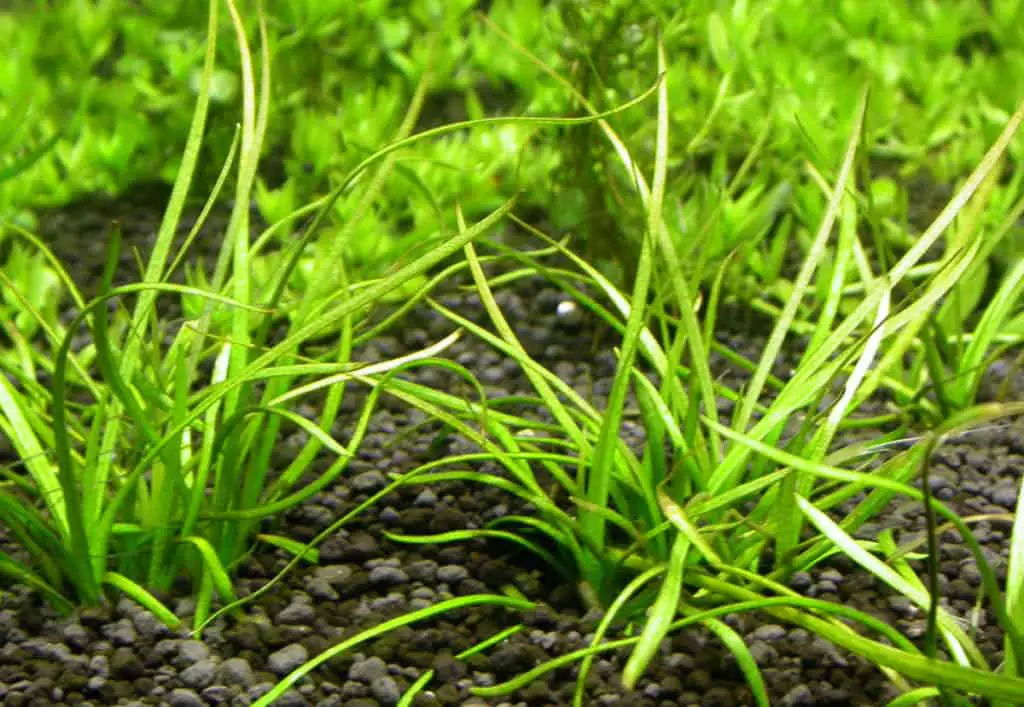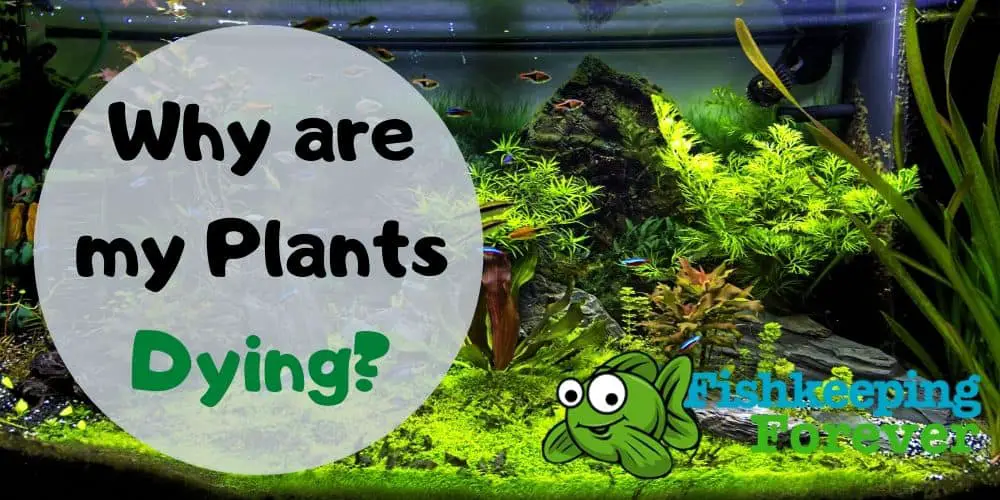Plants are a vital part of the overall health and well-being of any freshwater home aquarium. Unfortunately, many newcomers to the hobby do not understand how to properly incorporate plants into an aquarium and what’s needed to care for them. This often leads to them asking fish forums and pet stores the question we hear so often ‘ why are my aquarium plants dying?’
As a result, many of these plants do not grow properly and eventually die off and can even harm the water quality of your aquarium water.

Plants directly benefit fish by providing an organic food source to some, as well as producing oxygen and absorbing the carbon dioxide produced by the fish.
Below are some reasons why your aquarium plants may be dying, and how to reverse and prevent this alarming trend.
Table of Contents
General Aquarium Environment Guidelines
It is important to view plants as you would view the fish in your aquarium – organisms that will respond positively and negatively based on different factors in the environment.
If fish can be affected with disease and changes in the water, so can your plants. Many different steps can be taken in most aquariums to ensure that your plants have a healthy ecosystem to thrive in.

Water Quality
Perhaps the most basic element in keeping your plants healthy is to have the appropriate water type. Certain plants are native to freshwater while others can also thrive in slightly salted brackish water.
Also, it is important to note that many plants commonly included in aquariums are not meant to be fully submerged. Finally, be sure to maintain the appropriate pH level for the water. Most plants in an aquarium environment prefer a pH level of around 6.5 – 7.8 and a temperature of 68 – 78 degrees.
Plant Type
Sometimes, the best way to have healthy plants is to simply use plants that are easy to take care of. Most individuals do not want to spend countless hours cultivating an environment just perfect for plants. Most newbies to the hobby want a mixture of plants, ornaments and fish to make a beautiful community aquarium.
So purchasing hardy aquarium plants like Amazon Sword and Vallisneria Spiralis are 2 plants noted for their ability to grow in imperfect conditions. Hence, they, and many other hardy plants, should and are, often the first plants to be purchased by the inexperienced aquarist.

Fertilizer
The chance of keeping healthy aquarium plants will be drastically improved with the use of a safe and effective plants fertilizer. Avoid using fertilizers that contain phosphates since algae flourish on phosphates and can wreak havoc on your aquarium.
Slow-release fertilizers are an ideal option since their application can be sustained over longer periods, reducing the chance of over-fertilizing your plants. It is also important to verify that a fertilizer contains an appropriate amount of iron since iron deficiency is a common problem among aquarium plants.
Substrate
A substrate of about 2-3 inches must be maintained to ensure that the roots of the plants have enough room for healthy growth. The use of a laterite substrate will provide plants a healthy environment for growth while including about an inch of gravel on top of the laterite will provide an overall sturdy foundation for the substrate.
Plant focused soils are available and can be placed on the base of your aquarium when first set up and then covered by a layer of small to medium grain sized gravel.
This will provide the perfect substrate for your plants roots to receive the nutrients they need and the texture they love to take hold of.
Lighting
Just like outdoor plants, aquarium plants need an appropriate amount of sunlight to survive. Plants will need roughly 10 to 12 hours of light a day to properly undergo their natural process of photosynthesis, stimulating growth and producing oxygen for your tank.
Fluorescent lighting has been used for many years but is now often replaced with newer LED lights which offer a full-spectrum of lighting which is an ideal substitute for sunlight.
Many individuals mistakenly turn off the aquarium lights if they are leaving the house for the day, not realizing that plants need daily amounts of sunlight just like humans need food every day.

Specific Plant Tips and Problems
While developing an overall healthy environment in an aquarium is the most important factor in maintaining a healthy collection of plants, some specific adjustments and actions may need to be made.
Certain problems observed in plants can be resolved rather easily if appropriate action is taken promptly.
Yellow Leaves
Yellowing of plant leaves is an indication of 2 potential problems with your aquarium environment. Either there is not enough light in your aquarium, or the plants are not getting enough iron or potassium.
Providing your aquarium with 10-12 hours of full-spectrum lighting is enough light for healthy plant growth, whereas many good fertilizers contain the appropriate amount of iron and potassium to maintain plant health.

Holes in Leaves
If your plant leaves have holes in them, they are most likely suffering from Cryptocoryne Rot. Unfortunately, the specific cause of this condition is unknown, but factors such as large amounts of nitrates, inferior water quality, and lack of required nutrients are probably the key factors.
The best way to solve this problem is to replace the water in your tank and vacuum the top gravel layer of the substrate to remove waste. It’s also often a sign of fish nipping and eating the leaves. Fish like Bristlenose plecs and Siamese algae eater are often the culprits.
Growth Cessation
If your plants stop growing and begin to die and your aquarium environment is otherwise healthy, the water temperature in the tank may be too low. Either the tank heater is broken or of insufficient size to heat the aquarium.
In some cases, multiple water heaters may be needed to heat a large aquarium tank. As a general rule, most aquarium plants require a relatively warm water temperature to thrive of around 68-78 degrees.
Brittle/Fragile Leaves
Leaves that are too brittle or fragile are an indication of a potassium deficiency, an iron deficiency, or a pH level that is too high. Potassium and iron deficiencies can be easily remedied if caught early by simply using a good fertilizer in the aquarium.
A tip to help with high pH levels would be to use driftwood and plant soils in your aquarium to reduce the pH to a more suitable level.
Thin Stems
If the stems on many of your plants seem too thin, then the plants probably are not receiving enough light. The light sources may contain bulbs that are old or the light source itself may not contain a healthy full-spectrum ray of light.
Most likely, the plants are simply not receiving enough hours of light a day. Monitoring the quality of the light sources, as well as the amount of light received by the aquarium is just as important as monitoring the appearance of the plants.
Conclusion: Why are my plants dying?
Caring for the plants in an aquarium is just as important as taking care of the fish since both are living organisms that can only survive if they are functioning in concert with each other. Both general guidelines for an aquarium and specific approaches toward maintaining plant life must be implemented to ensure a healthy environment for plants.
- Best Aquarium Plant Substrate Review 2022
- 18 Benefits of Marimo Balls ( How many per Gallon? )
- 11 Best Plants for Betta fish
- Top 7 Best plants for baby fish
- 9 Best Plants for Guppies ( Freshwater Aquarium Plants )

I have been working in the tropical fish industry for over 30 years now and I’m still learning. Everyday is a school day in this hobby. In my spare time I play golf very badly!




